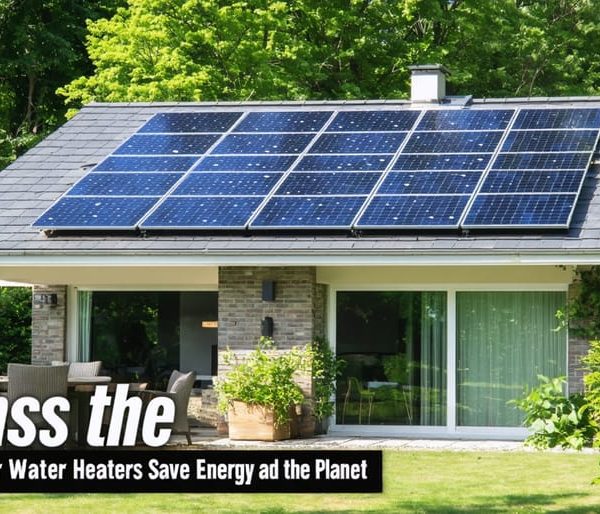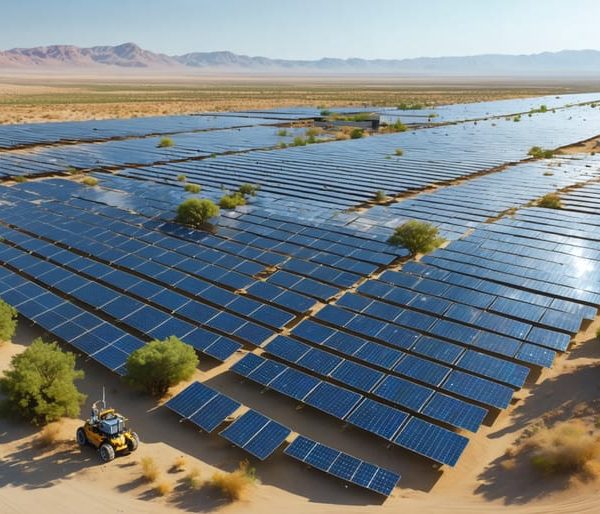MIT’s Solar Desalination Breakthrough Makes Clean Water Affordable
MIT’s groundbreaking solar-powered desalination technology transforms how we access clean water, offering a sustainable solution to global water scarcity. This innovative system uses multi-layer solar panels to simultaneously generate electricity and distill seawater, achieving up to 385% more efficiency than traditional desalination methods. Operating without external power sources and requiring minimal maintenance, MIT’s design makes clean water production accessible to coastal communities and remote areas worldwide. The technology’s modular design allows for easy scaling, from small household units processing 5 gallons daily to industrial installations capable of supporting entire communities. By harnessing abundant solar energy and employing advanced heat recovery systems, this breakthrough addresses both water purification and energy sustainability challenges, marking a significant advancement in renewable water treatment solutions.
How MIT’s Solar Desalination Works
The Multi-Stage Design
The MIT solar desalination system operates through a carefully designed multi-stage process that maximizes water production while minimizing energy waste. At its heart, the system uses a series of flat panels stacked together, each working like a mini greenhouse. When sunlight hits the top layer, it warms up the saltwater underneath, causing it to evaporate.
What makes this design special is how it reuses heat. As water vapor condenses in the first stage, it releases heat that helps warm the next stage. This domino effect continues through multiple stages, making the system up to 385% more efficient than single-stage designs.
Each stage is made with special materials that attract water vapor but repel salt, keeping the produced freshwater clean. The spacing between stages is precisely calculated to optimize vapor flow and heat transfer. Think of it like a set of cascading steps, where each level catches and processes water that would otherwise go to waste.
The result? A system that can produce up to 5.8 liters of clean water per square meter of solar panels each hour – about three times more than traditional solar stills.
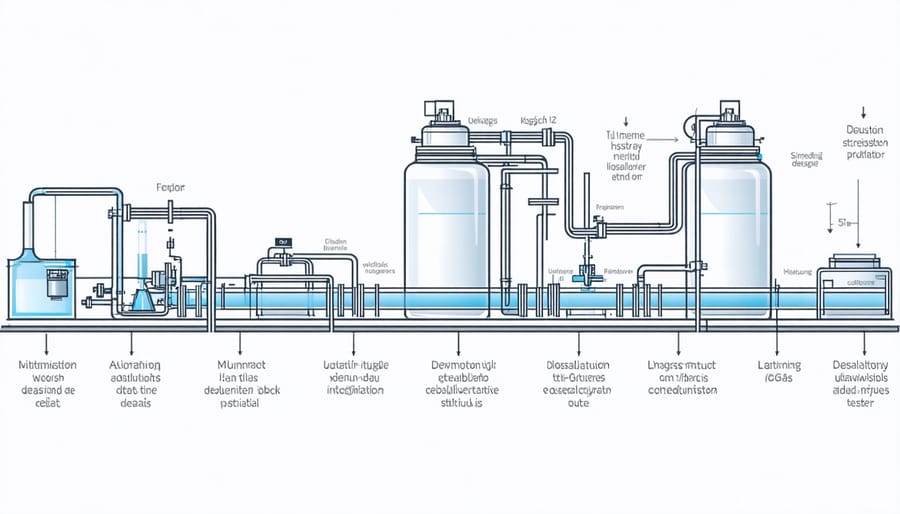
Solar Energy Collection and Heat Management
The MIT solar desalination system employs innovative solar energy collection methods that maximize efficiency while keeping costs manageable. The system uses a layered design with a dark-colored absorption material that captures sunlight and converts it into heat energy. This heat is then distributed through a specialized network of channels that maintain optimal temperatures throughout the desalination process.
What makes this system particularly clever is its heat management approach. Instead of letting excess heat escape, it’s carefully controlled and recycled within the system. A series of heat exchangers and thermal insulators work together to maintain the perfect temperature range for water evaporation, typically between 160-180°F (71-82°C).
The top layer features a special coating that allows maximum sunlight absorption while minimizing heat loss to the environment. This efficient design enables the system to operate effectively even during periods of reduced sunlight, making it practical for various climate conditions and locations.
Real-World Applications and Benefits
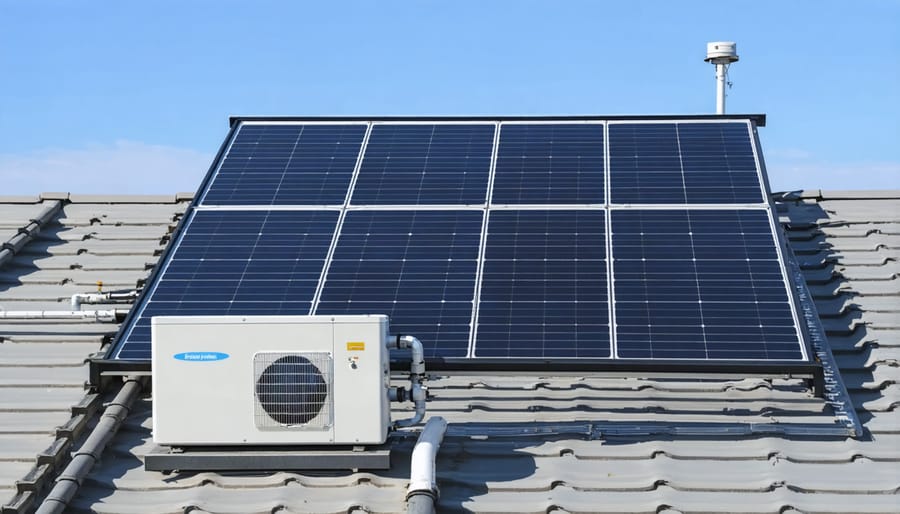
Home Water Purification Solutions
MIT’s solar desalination technology can be adapted for home use, offering a sustainable solution for water purification needs. The system can be installed on rooftops or in yards with adequate sun exposure, making it ideal for residential properties looking to reduce their dependence on municipal water supplies.
Installation typically involves setting up solar collectors, a water feed system, and collection tanks. For optimal performance, the system should be positioned to receive maximum sunlight during peak hours, usually facing south in the Northern Hemisphere. Homeowners should consider factors like roof strength, local building codes, and available space before installation.
The residential units can process 250-400 gallons of water daily, depending on sunlight conditions and system size. This output is sufficient for most household needs, including drinking, cooking, and gardening. The maintenance requirements are minimal, mainly involving regular cleaning of solar panels and periodic filter replacements.
Before installation, it’s recommended to conduct a water quality test to determine the appropriate system configuration. Professional installation ensures proper setup and compliance with local regulations, though DIY options are available for experienced homeowners.
Cost Savings and Environmental Impact
MIT’s solar desalination technology offers substantial cost savings compared to traditional desalination methods, with operating costs reduced by up to 50% through solar energy utilization. A comprehensive cost-benefit analysis of solar water systems shows that initial installation costs can be recovered within 3-5 years through reduced energy bills and maintenance expenses.
The environmental impact is equally impressive, with each installation potentially reducing carbon emissions by 2-3 tons annually compared to conventional desalination systems. The technology’s eco-friendly design minimizes brine discharge, protecting marine ecosystems and reducing environmental stress on coastal areas.
For homeowners and businesses, the system’s modular nature allows for scalable implementation, making it adaptable to various needs and budgets. The use of recyclable materials in construction and the system’s long lifespan of 15-20 years further enhance its environmental credentials. Additionally, the technology’s ability to operate off-grid makes it particularly valuable for remote locations, reducing the need for extensive infrastructure and its associated environmental impact.
Installation and Maintenance
Setting Up Your System
Setting up your MIT-inspired solar desalination system starts with choosing the right location. Look for an unobstructed area that receives direct sunlight for at least 6-8 hours daily. Your installation space should be level and sturdy, typically on a rooftop or open ground area.
Begin by assembling the solar collector frame, which will house the specialized layered materials. The base layer consists of a dark-colored absorber material, followed by the water channeling system. Install the transparent cover on top, ensuring proper sealing to prevent heat loss.
Next, connect the water input system. You’ll need a pump to move saltwater through the system and collection tanks for both the input water and purified output. Install the vapor collection system, which includes condensation surfaces and collection channels for the purified water.
The control system should be mounted in a weather-protected area nearby. This includes the temperature sensors, flow regulators, and optional monitoring equipment. Make sure all electrical connections are properly insulated and weather-proofed.
For optimal performance, install insulation around the sides and bottom of the system. Double-check all connections and seals before initial operation. Start with a small water volume to test the system and adjust the flow rate as needed.
Remember to follow local building codes and obtain necessary permits. While DIY installation is possible, consulting with a solar installation professional can ensure proper setup and maximum efficiency.
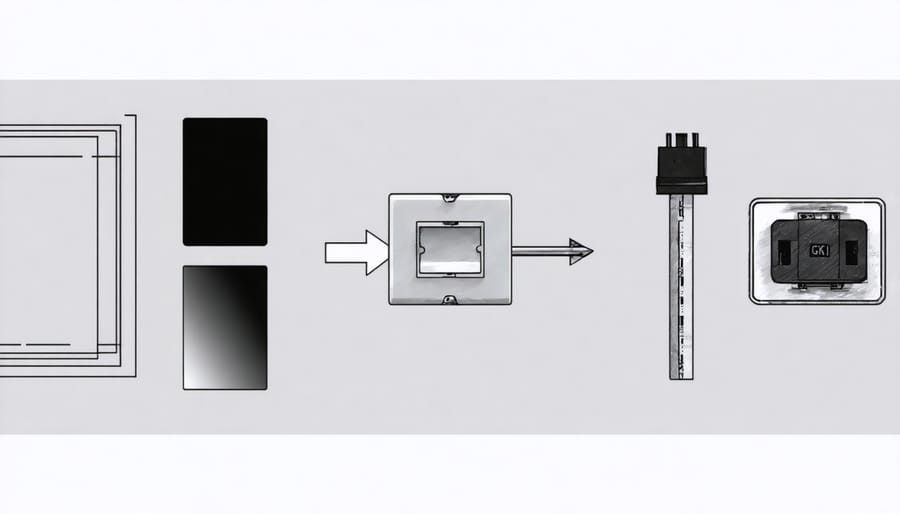
Maintenance Tips
To keep your MIT solar desalination system running efficiently, regular maintenance is essential. Clean the solar collectors monthly using a soft cloth and mild soap solution to remove dust and debris that can reduce efficiency. Check the water filters every three months and replace them as needed to maintain optimal performance.
Inspect the heat exchanger annually for scale buildup, which can impact system efficiency. If you notice reduced water output or unusual noises, flush the system with a vinegar solution to remove mineral deposits. Monitor the condensation collection tray weekly and ensure proper drainage to prevent overflow.
For coastal installations, pay special attention to salt residue on external components. Rinse these areas with fresh water bi-weekly to prevent corrosion. Check all seals and connections quarterly for signs of wear or leakage, and replace any damaged components promptly.
Keep detailed maintenance records and schedule professional inspections annually. If water production decreases significantly, first check for clogged filters or scale buildup before contacting a specialist. Most issues can be resolved through simple troubleshooting and regular cleaning routines.
Remember to wear appropriate safety gear when performing maintenance and always follow manufacturer guidelines for specific maintenance procedures.
Future Developments and Improvements
MIT’s solar desalination technology continues to evolve, with researchers focusing on several promising areas for improvement. One of the most exciting developments is the enhancement of the solar absorption materials, which could boost efficiency by up to 30% in the coming years. Scientists are experimenting with new carbon-based materials that could make the system more affordable while maintaining its effectiveness.
Smart automation is another frontier being explored, with teams working on AI-powered systems that can optimize water production based on weather conditions and demand. These intelligent controls could help homeowners maximize their water output while minimizing energy consumption.
Researchers are also developing more compact designs that could make the technology suitable for urban rooftops and smaller spaces. This includes modular systems that can be easily scaled up or down depending on needs, making the technology more accessible to different types of users.
Storage solutions are getting attention too, with new phase-change materials being tested to maintain consistent water production even after sunset. This could revolutionize how we think about 24/7 water availability from solar-powered systems.
Perhaps most exciting for homeowners is the development of hybrid systems that combine desalination with other household functions. Imagine a system that not only produces clean water but also helps with space heating or cooling – that’s exactly what some research teams are working toward.
Looking ahead, we can expect to see more durable materials, longer system lifespans, and reduced maintenance requirements. These improvements, combined with decreasing costs, suggest that solar desalination could become a standard feature in homes within the next decade.
MIT’s solar desalination technology represents a groundbreaking solution for our global water challenges, offering hope for communities worldwide while demonstrating the incredible potential of renewable energy innovation. By combining efficient solar power collection with advanced water purification techniques, this system makes clean water production more accessible and sustainable than ever before.
As we face increasing water scarcity and rising energy costs, the importance of such innovations cannot be overstated. Whether you’re a homeowner looking to secure your water supply or a business owner aiming to reduce operational costs, MIT’s solar desalination technology offers a practical and environmentally responsible solution.
The time to act is now. By embracing this technology, we can contribute to a more sustainable future while enjoying the benefits of energy-efficient water purification. Consider exploring solar desalination for your property, connecting with local installers, or supporting research and development in this field. Together, we can turn water scarcity challenges into opportunities for innovation and environmental stewardship.
Let’s be part of the solution by adopting and advocating for sustainable water technologies that will benefit generations to come.


